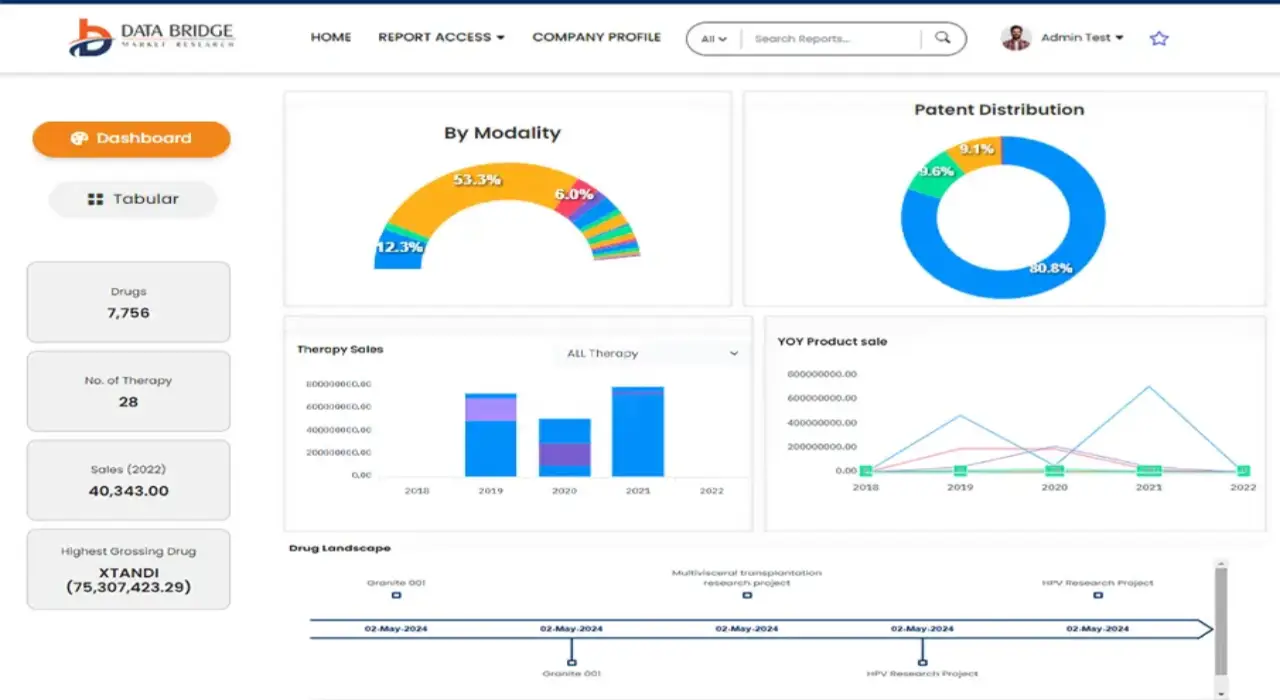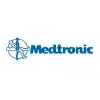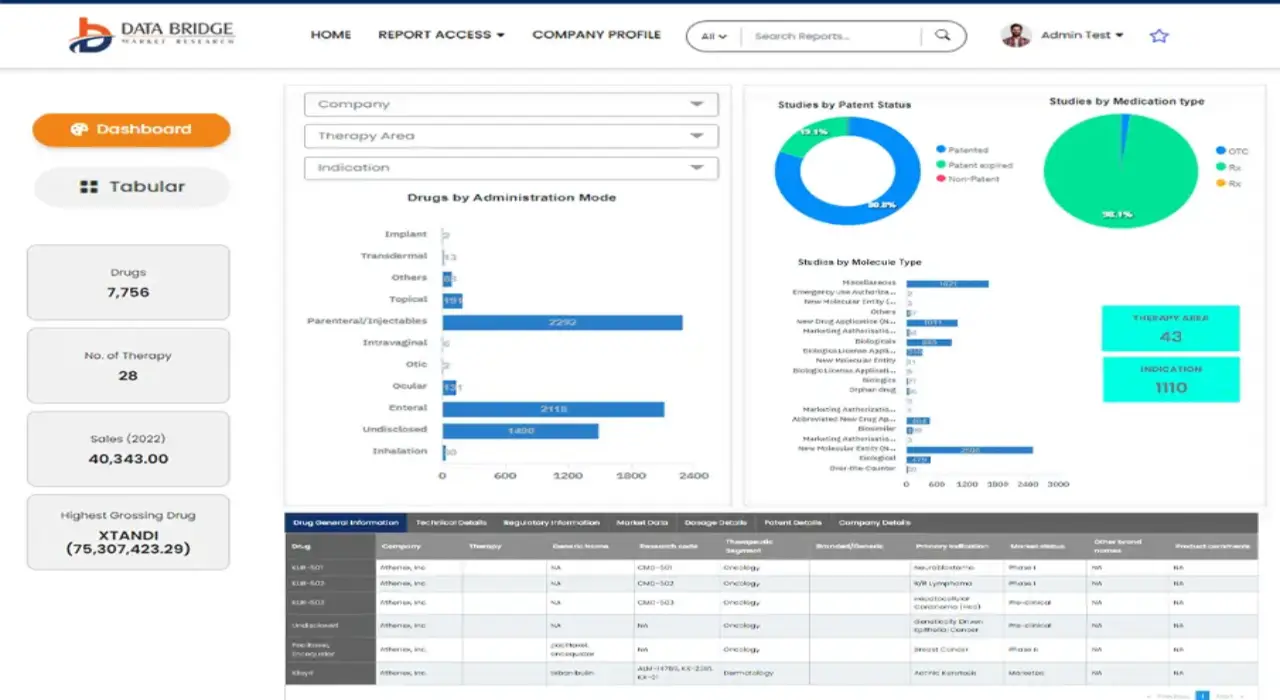Global Postmenopausal Vaginal Atrophy Pva Drugs Market
Market Size in USD Billion
CAGR :
% 
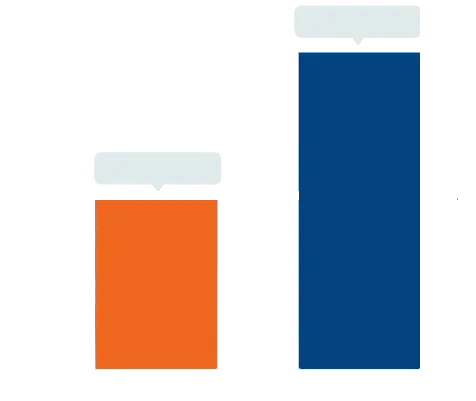 USD
2.00 Billion
USD
3.57 Billion
2021
2029
USD
2.00 Billion
USD
3.57 Billion
2021
2029
| 2022 –2029 | |
| USD 2.00 Billion | |
| USD 3.57 Billion | |
|
|
|
|
Global Postmenopausal Vaginal Atrophy (PVA) Drugs Market, By Drugs (Topical Estrogen, Oral Estrogen, Others), Product (Creams, Pessaries, Tablets, Gels, Solutions, Inserts, Others), End-Users (Hospitals, Homecare, Specialty Clinics, Others), Distribution Channel (Hospital Pharmacy, Online Pharmacy, Retail Pharmacy) – Industry Trends and Forecast to 2029.
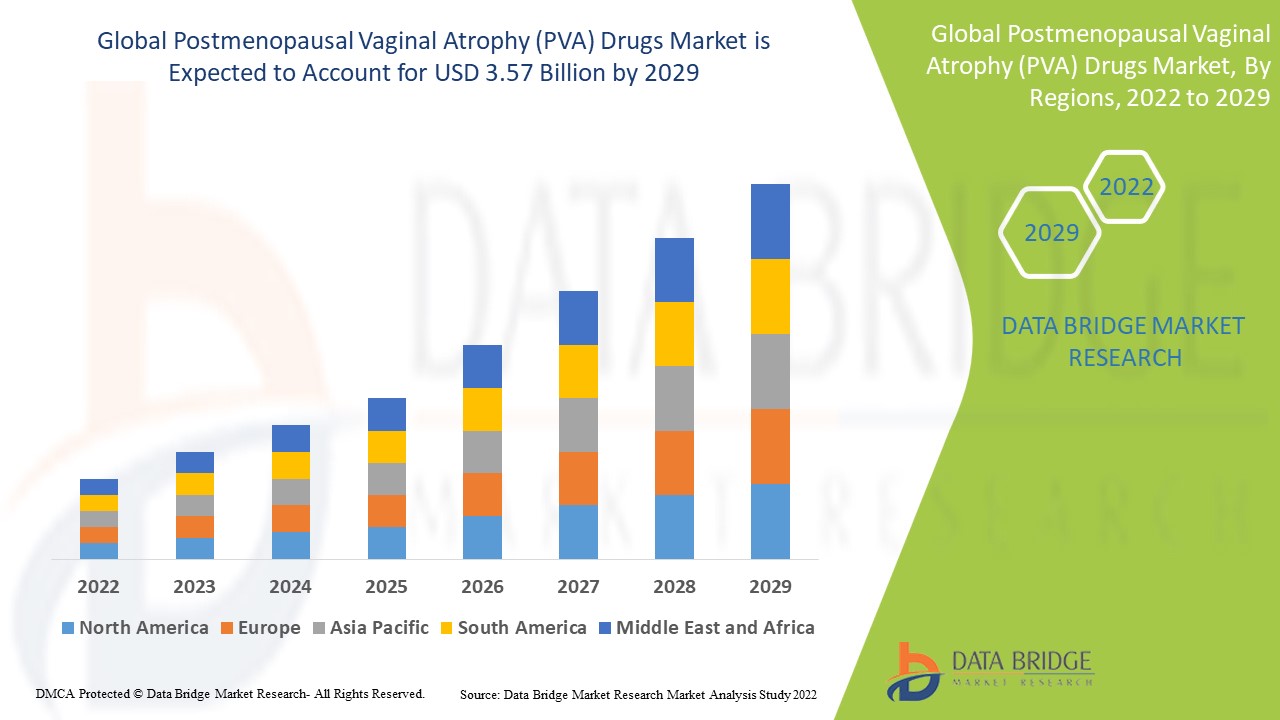
Postmenopausal Vaginal Atrophy (PVA) Drugs Market Analysis and Size
The global postmenopausal vaginal atrophy (PVA) drugs market is expected to witness significant growth during the forecast period. The common symptoms associated with this condition include irritation, burning sensation, redness, and dyspareunia. Several branded and generic drugs are available in the market for the treatment of postmenopausal vaginal atrophy. The development of top non-estrogen-based drugs has also helped the market gain pace in the recent years. In addition to this, the enhancement of the healthcare reforms for meeting the requirements to treat vaginal atrophy is also a major factor boosting the development of the market.
Data Bridge Market Research analyses a growth rate in global postmenopausal vaginal atrophy (PVA) drugs market in the forecast period 2022-2029. The expected CAGR of global postmenopausal vaginal atrophy (PVA) drugs market is tend to be around 7.50% in the mentioned forecast period. The market was valued at USD 2 billion in 2021, and it would grow upto USD 3.57 billion by 2029. In addition to the market insights such as market value, growth rate, market segments, geographical coverage, market players, and market scenario, the market report curated by the Data Bridge Market Research team also includes in-depth expert analysis, patient epidemiology, pipeline analysis, pricing analysis, and regulatory framework.
Postmenopausal Vaginal Atrophy (PVA) Drugs Market Scope and Segmentation
|
Report Metric |
Details |
|
Forecast Period |
2022 to 2029 |
|
Base Year |
2021 |
|
Historic Years |
2020 (Customizable to 2014 - 2019) |
|
Quantitative Units |
Revenue in USD Million, Volumes in Units, Pricing in USD |
|
Segments Covered |
Drugs (Topical Estrogen, Oral Estrogen, Others), Product (Creams, Pessaries, Tablets, Gels, Solutions, Inserts, Others), End-Users (Hospitals, Homecare, Specialty Clinics, Others), Distribution Channel (Hospital Pharmacy, Online Pharmacy, Retail Pharmacy) |
|
Countries Covered |
U.S., Canada and Mexico in North America, Germany, France, U.K., Netherlands, Switzerland, Belgium, Russia, Italy, Spain, Turkey, Rest of Europe in Europe, China, Japan, India, South Korea, Singapore, Malaysia, Australia, Thailand, Indonesia, Philippines, Rest of Asia-Pacific (APAC) in the Asia-Pacific (APAC), Saudi Arabia, U.A.E, South Africa, Egypt, Israel, Rest of Middle East and Africa (MEA) as a part of Middle East and Africa (MEA), Brazil, Argentina and Rest of South America as part of South America |
|
Market Players Covered |
Pfizer Inc (U.S.), Mylan N.V. (U.S.), Novartis AG (Switzerland), Hikma Pharmaceuticals plc (U.K.), Aurobindo Pharma (India), AbbVie Inc. (Ireland), Melinta Therapeutics, Inc (U.S.), Bristol-Myers Squibb Company (U.S.), GSK plc. (U.K.), Bayer AG (Germany), Lupin (India), Perrigo Company plc (U.S.), Bionovo, Inc. (Saudi Arabia), TherapeuticsMD, Inc. (U.S.), Endoceutics, Inc (Canada) |
|
Market Opportunities |
|
Market Definition
Postmenopausal vaginal atrophy (PVA) is the type of condition of vaginal wall thinning the reduced level of estrogen causes that. The changes in the genitourinary tract arising from a hypoestrogenic state includes decreased vaginal vascularization, reduced vaginal lubrication, thinning of the vaginal epithelium. The pH level continuously increases and loss of lactobacilli microflora allows opportunistic colonization by pathogenic bacteria can produce infection.
Global Postmenopausal Vaginal Atrophy (PVA) Drugs Market Dynamics
Drivers
- Prevalence of Postmenopausal Vaginal Atrophy
The increasing incidence of postmenopausal vaginal atrophy boosts the demand for treatment methods. The most prevalent symptom is vaginal dryness which affects 60% of women in the postmenopausal period. These symptoms can generally lead to sexual dysfunction and subsequently to reduced quality of life.
- Growing Healthcare Plans
Numerous established healthcare infrastructures, as well as the increased frequency of disease and the occurrence of significant manufacturers, are the primary factors contributing to the market share. For instance, The Affordable Care Act has increased the number of insured women and has been a boosting factor in the treatment-seeking behavior of people with this condition. Furthermore, this law provides many U.S. citizens with better health security by putting in place comprehensive health insurance reforms that have reduced healthcare costs and expanded coverage. Consequently, the introduction of beneficial healthcare plans in the US will prompt more women to seek treatment, thereby helping in the growth of this market during the forecast period.
Opportunities
- Increased Awareness of the Disease
The rising awareness among the population about this kind of disease results in the market's growth. The growing awareness about the benefits of postmenopausal vaginal atrophy drugs encourages people to opt for this treatment. Furthermore, in developed countries such as the US, women can openly discuss their symptoms with their physician, which creates awareness and helps in early diagnosis, thus encouraging this market growth.
- Increasing Demand for Retail Pharmacies
The rise in the number of postmenopausal vaginal atrophy drugs delivered through retail pharmacies and the surge in the number of retail pharmacies in highly advanced countries create much opportunities for the market growth. Additionally, patients choose retail pharmacies for purchasing drugs, as these are easily available.
Restraints/Challenges
- Lack of Awareness about the infection
The lack of awareness about these infections could curb the growth of the global postmenopausal vaginal atrophy drugs market over a forecast period. Not much attention about the infection leads to improper treatment thus restraining the market growth.
- High Cost
The huge expenditure associated with these agents surely hamper the market growth. Several antifungal, antiviral, antibacterial drugs are facing an increasing hike and thus is hampering the market growth.
This global postmenopausal vaginal atrophy (PVA) drugs market report provides details of new recent developments, trade regulations, import-export analysis, production analysis, value chain optimization, market share, impact of domestic and localized market players, analyses opportunities in terms of emerging revenue pockets, changes in market regulations, strategic market growth analysis, market size, category market growths, application niches and dominance, product approvals, product launches, geographic expansions, technological innovations in the market. To gain more info on the global postmenopausal vaginal atrophy (PVA) drugs market contact Data Bridge Market Research for an Analyst Brief, our team will help you take an informed market decision to achieve market growth.
COVID-19 Impact on Global Postmenopausal Vaginal Atrophy (PVA) Drugs Market
The COVID-19 pandemic has hindered the development, production, and supply of drugs and other healthcare products and affected many companies' growth of healthcare businesses worldwide. However, in the post-pandmeic era, the market is projected to grow because of an increase in R&D initiatives for exact diagnosis. Numerous government and non-government bodies, including the European Institute of Women's Health (EIWH) and the World Health Organization, have launched multiple public awareness campaigns about women's health.Thus, COVID-19 left a major imapact on the global postmenopausal vaginal atrophy (PVA) drugs market.
Global Postmenopausal Vaginal Atrophy (PVA) Drugs Market Scope
The global postmenopausal vaginal atrophy (PVA) drugs market is segmented on the basis of drugs, product, distribution channel and end-user. The growth amongst these segments will help you analyze meagre growth segments in the industries and provide the users with a valuable market overview and market insights to help them make strategic decisions for identifying core market applications.
Drugs
- Topical Estrogen
- Oral Estrogen
- Others
Product
- Creams
- Pessaries
- Tablets
- Gels
- Solutions
- Inserts
- Others
End User
- Hospitals
- Homecare
- Specialty Clinics
- Others
Distribution Channel
- Hospital Pharmacy
- Online Pharmacy
- Retail Pharmacy
Postmenopausal Vaginal Atrophy (PVA) Drugs Market Regional Analysis/Insights
The global postmenopausal vaginal atrophy (PVA) drugs market is analyzed and market size insights and trends are provided by drugs, product, distribution channel and end-user as referenced above.
The major countries covered in the global postmenopausal vaginal atrophy (PVA) drugs market report are the U.S., Canada and Mexico in North America, Germany, France, U.K., Netherlands, Switzerland, Belgium, Russia, Italy, Spain, Turkey, Rest of Europe in Europe, China, Japan, India, South Korea, Singapore, Malaysia, Australia, Thailand, Indonesia, Philippines, Rest of Asia-Pacific (APAC) in the Asia-Pacific (APAC), Saudi Arabia, U.A.E, South Africa, Egypt, Israel, Rest of Middle East and Africa (MEA) as a part of Middle East and Africa (MEA), Brazil, Argentina and Rest of South America as part of South America.
Asia-Pacific has been witnessing a positive growth for global postmenopausal vaginal atrophy (PVA) drugs market throughout the forecasted period because of the increasing initiatives taken by the government and pharmaceutical organizations to spread awareness and increased occurrence of vaginal infection in women.
North America dominates the market because of the increasing initiatives taken by the pharmaceutical organizations to generate novel formulation and well-spread awareness of anti-infectives among end-users.
The country section of the report also provides individual market impacting factors and changes in regulation in the market domestically that impacts the current and future trends of the market. Also, the presence and availability of global brands and their challenges faced due to large or scarce competition from local and domestic brands, impact of domestic tariffs and trade routes are considered while providing forecast analysis of the country data.
Competitive Landscape and Global Postmenopausal Vaginal Atrophy (PVA) Drugs Market Share Analysis
The global postmenopausal vaginal atrophy (PVA) drugs market competitive landscape provides details by competitor. Details included are company overview, company financials, revenue generated, market potential, investment in research and development, new market initiatives, global presence, production sites and facilities, production capacities, company strengths and weaknesses, product launch, product width and breadth, application dominance. The above data points provided are only related to the companies' focus related global postmenopausal vaginal atrophy (PVA) drugs market.
Key players operating in the global postmenopausal vaginal atrophy (PVA) drugs market include:
- Pfizer Inc (U.S.)
- Mylan N.V. (U.S.)
- Novartis AG (Switzerland)
- Hikma Pharmaceuticals plc (U.K.)
- Aurobindo Pharma (India)
- AbbVie Inc. (Ireland)
- Melinta Therapeutics, Inc (U.S.)
- Bristol-Myers Squibb Company (U.S.)
- GSK plc. (U.K.)
- Bayer AG (Germany)
- Lupin (India)
- Perrigo Company plc (U.S.)
- Bionovo, Inc. (Saudi Arabia)
- TherapeuticsMD, Inc. (U.S.)
- Endoceutics, Inc (Canada)
SKU-
Get online access to the report on the World's First Market Intelligence Cloud
- Interactive Data Analysis Dashboard
- Company Analysis Dashboard for high growth potential opportunities
- Research Analyst Access for customization & queries
- Competitor Analysis with Interactive dashboard
- Latest News, Updates & Trend analysis
- Harness the Power of Benchmark Analysis for Comprehensive Competitor Tracking
Table of Content
1 INTRODUCTION
1.1 OBJECTIVES OF THE STUDY
1.2 MARKET DEFINITION
1.3 OVERVIEW OF GLOBAL XX MARKET
1.4 CURRENCY AND PRICING
1.5 LIMITATION
1.6 MARKETS COVERED
2 MARKET SEGMENTATION
2.1 KEY TAKEAWAYS
2.2 ARRIVING AT THE GLOBAL POSTMENOPAUSAL VAGINAL ATROPHY (PVA) DRUGS MARKET SIZE
2.2.1 VENDOR POSITIONING GRID
2.2.2 TECHNOLOGY LIFE LINE CURVE
2.2.3 TRIPOD DATA VALIDATION MODEL
2.2.4 MARKET GUIDE
2.2.5 MULTIVARIATE MODELLING
2.2.6 TOP TO BOTTOM ANALYSIS
2.2.7 CHALLENGE MATRIX
2.2.8 APPLICATION COVERAGE GRID
2.2.9 STANDARDS OF MEASUREMENT
2.2.10 VENDOR SHARE ANALYSIS
2.2.11 DATA POINTS FROM KEY PRIMARY INTERVIEWS
2.2.12 DATA POINTS FROM KEY SECONDARY DATABASES
2.3 GLOBAL XX MARKET: RESEARCH SNAPSHOT
2.4 ASSUMPTIONS
3 EXECUTIVE SUMMARY
4 PREMIUM INSIGHTS
4.1 PESTEL ANALYSIS
4.2 PORTER’S FIVE FORCES MODEL
5 INDUSTRY INSIGHTS
5.1 PATENT ANALYSIS
5.1.1 PATENT LANDSCAPE
5.1.2 USPTO NUMBER
5.1.3 PATENT EXPIRY
5.1.4 EPIO NUMBER
5.1.5 PATENT STRENGTH AND QUALITY
5.1.6 PATENT CLAIMS
5.1.7 PATENT CITATIONS
5.1.8 PATENT LITIGATION AND LICENSING
5.1.9 FILE OF PATENT
5.1.10 PATENT RECEIVED CONTRIES
5.1.11 TECHNOLOGY BACKGROUND
5.2 DRUG TREATMENT RATE BY MATURED MARKETS
5.3 DEMOGRAPHIC TRENDS: IMPACTS ON ALL INCIDENCE RATES
5.4 PATIENT FLOW DIAGRAM
5.5 KEY PRICING STRATEGIES
5.6 KEY PATIENT ENROLLMENT STRATEGIES
5.7 INTERVIEWS WITH SPECIALIST
5.8 OTHER KOL SNAPSHOTS
6 EPIDEMIOLOGY
6.1 INCIDENCE OF ALL BY GENDER
6.2 TREATMENT RATE
6.3 MORTALITY RATE
6.4 DRUG ADHERENCE AND THERAPY SWITCH MODEL
6.5 PATIENT TREATMENT SUCCESS RATES
7 MERGERS AND ACQUISITION
7.1 LICENSING
7.2 COMMERCIALIZATION AGREEMENTS
8 REGULATORY FRAMEWORK
8.1 REGULATORY APPROVAL PROCESS
8.2 GEOGRAPHIES’ EASE OF REGULATORY APPROVAL
8.3 REGULATORY APPROVAL PATHWAYS
8.4 LICENSING AND REGISTRATION
8.5 POST-MARKETING SURVEILLANCE
8.6 GOOD MANUFACTURING PRACTICES (GMPS) GUIDELINES
9 PIPELINE ANALYSIS
9.1 CLINICAL TRIALS AND PHASE ANALYSIS
9.2 DRUG THERAPY PIPELINE
9.3 PHASE III CANDIDATES
9.4 PHASE II CANDIDATES
9.5 PHASE I CANDIDATES
9.6 OTHERS (PRE-CLINICAL AND RESEARCH)
TABLE 1 GLOBAL CLINICAL TRIAL MARKET FOR GLOBAL POSTMENOPAUSAL VAGINAL ATROPHY (PVA) DRUGS MARKET
Company Name Therapeutic Area
XX XX
XX XX
XX XX
XX XX
XX XX
XX XX
Sources: Press Releases, Annual Reports, SEC Filings, Investor Presentations, Other Government Sources, Analysis Based on Inputs from Secondary, Expert Interviews
TABLE 2 DISTRIBUTION OF PRODUCTS AND PROJECTS BY PHASE
Phase Number of Projects
Preclinical/Research Projects XX
Clinical Development XX
Phase I XX
Phase II XX
Phase III XX
U.S. Filed/Approved But Not Yest Marketed XX
Total XX
Sources: Press Releases, Annual Reports, SEC Filings, Investor Presentations, Other Government Sources, Analysis Based on Inputs from Secondary, Expert Interviews
TABLE 3 DISTRIBUTION OF PROJECTS BY THERAPEUTIC AREA AND PHASE
Therapeutic Area Preclinical/ Research Project
XX XX
XX XX
XX XX
XX XX
XX XX
Total Projects XX
Sources: Press Releases, Annual Reports, SEC Filings, Investor Presentations, Other Government Sources, Analysis Based on Inputs from Secondary, Expert Interviews
TABLE 4 DISTRIBUTION OF PROJECTS BY SCIENTIFIC APPROACH AND PHASE
Technology Preclinical/ Research Project
XX XX
XX XX
XX XX
XX XX
XX XX
Total Projects XX
Sources: Press Releases, Annual Reports, SEC Filings, Investor Presentations, Other Government Sources, Analysis Based on Inputs from Secondary, Expert Interviews
FIGURE 1 TOP ENTITIES BASED ON R&D GLANCE FOR GLOBAL POSTMENOPAUSAL VAGINAL ATROPHY (PVA) DRUGS MARKET
Sources: Press Releases, Annual Reports, SEC Filings, Investor Presentations, Other Government Sources, Analysis Based on Inputs from Secondary, Expert Interviews
10 MARKETED DRUG ANALYSIS
10.1 DRUG
10.1.1 BRAND NAME
10.1.2 GENERICS NAME
10.2 THERAPEUTIC INDIACTION
10.3 PHARACOLOGICAL CLASS OD THE DRUG
10.4 DRUG PRIMARY INDICATION
10.5 MARKET STATUS
10.6 MEDICATION TYPE
10.7 DRUG DOSAGES FORM
10.8 DOSAGES AVAILABILITY
10.9 PACKAGING TYPE
10.1 DRUG ROUTE OF ADMINISTRATION
10.11 DOSING FREQUENCY
10.12 DRUG INSIGHT
10.13 AN OVERVIEW OF THE DRUG DEVELOPMENT ACTIVITIES SUCH AS REGULATORY MILSTONE, SAFETY DATA AND EFFICACY DATA, MARKET EXCLUSIVITY DATA.
10.13.1 FORECAST MARKET OUTLOOK
10.13.2 CROSS COMPETITION
10.13.3 THERAPEUTIC PORTFOLIO
10.13.4 CURRENT DEVELOPMENT SCENARIO
11 MARKET ACCESS
11.1 10-YEAR MARKET FORECAST
11.2 CLINICAL TRIAL RECENT UPDATES
11.3 ANNUAL NEW FDA APPROVED DRUGS
11.4 DRUGS MANUFACTURER AND DEALS
11.5 MAJOR DRUG UPTAKE
11.6 CURRENT TREATMENT PRACTICES
11.7 IMPACT OF UPCOMING THERAPY
12 R & D ANALYSIS
12.1 COMPARATIVE ANALYSIS
12.2 DRUG DEVELOPMENTAL LANDSCAPE
12.3 IN-DEPTH INSIGHTS ON REGULATORY MILESTONES
12.4 THERAPEUTIC ASSESSMENT
12.5 ASSET-BASED COLLABORATIONS AND PARTNERSHIPS
13 MARKET OVERVIEW
13.1 DRIVERS
13.2 RESTRAINTS
13.3 OPPORTUNITIES
13.4 CHALLENGES
14 GLOBAL POSTMENOPAUSAL VAGINAL ATROPHY (PVA) DRUGS MARKET, SWOT AND DBMR ANALYSIS
15 GLOBAL POSTMENOPAUSAL VAGINAL ATROPHY (PVA) DRUGS MARKET, BY PRODUCT TYPE
15.1 OVERVIEW
15.2 TOPICAL ESTROGEN
15.2.1 VAGINAL ESTROGEN CREAMS
15.2.1.1. PREMARIN
15.2.1.1.1. MARKET VALUE (USD MILLION)
15.2.1.1.2. MARKET VOLUME (UNITS)
15.2.1.1.3. AVERAGE SELLING PRICE (USD)
15.2.1.2. ESTRACE
15.2.1.2.1. MARKET VALUE (USD MILLION)
15.2.1.2.2. MARKET VOLUME (UNITS)
15.2.1.2.3. AVERAGE SELLING PRICE (USD)
15.2.1.3. OTHERS
15.2.2 VAGINAL ESTROGEN RINGS
15.2.2.1. ESTRING
15.2.2.1.1. MARKET VALUE (USD MILLION)
15.2.2.1.2. MARKET VOLUME (UNITS)
15.2.2.1.3. AVERAGE SELLING PRICE (USD)
15.2.2.2. FERMING
15.2.2.2.1. MARKET VALUE (USD MILLION)
15.2.2.2.2. MARKET VOLUME (UNITS)
15.2.2.2.3. AVERAGE SELLING PRICE (USD)
15.2.2.3. OTHERS
15.2.3 VAGINAL ESTROGEN TABETS
15.2.3.1. VAGIFEM
15.2.3.1.1. MARKET VALUE (USD MILLION)
15.2.3.1.2. MARKET VOLUME (UNITS)
15.2.3.1.3. AVERAGE SELLING PRICE (USD)
15.2.3.2. YUVAFEM
15.2.3.2.1. MARKET VALUE (USD MILLION)
15.2.3.2.2. MARKET VOLUME (UNITS)
15.2.3.2.3. AVERAGE SELLING PRICE (USD)
15.2.3.3. OTHERS
15.3 ORAL ESTROGEN
15.3.1 OSPHENA
15.3.1.1. MARKET VALUE (USD MILLION)
15.3.1.2. MARKET VOLUME (UNITS)
15.3.1.3. AVERAGE SELLING PRICE (USD)
15.3.2 SENSHIO
15.3.2.1. MARKET VALUE (USD MILLION)
15.3.2.2. MARKET VOLUME (UNITS)
15.3.2.3. AVERAGE SELLING PRICE (USD)
15.3.3 OTHERS
16 GLOBAL POSTMENOPAUSAL VAGINAL ATROPHY (PVA) DRUGS MARKET, BY FORM
16.1 OVERVIEW
16.2 CREAMS
16.3 TABLETS
16.4 CAPSULES
16.5 OTHERS
17 GLOBAL POSTMENOPAUSAL VAGINAL ATROPHY (PVA) DRUGS MARKET, BY DRUG TYPE
17.1 OVERVIEW
17.2 BRANDED
17.2.1 PREMARIN
17.2.2 ESTRACE
17.2.3 OTHERS
17.3 GENERIC
18 GLOBAL POSTMENOPAUSAL VAGINAL ATROPHY (PVA) DRUGS MARKET, BY MODE OF PURCHASE
18.1 OVERVIEW
18.2 PRESCRIPTION
18.3 OVER THE COUNTER
19 GLOBAL POSTMENOPAUSAL VAGINAL ATROPHY (PVA) DRUGS MARKET, BY END USER
19.1 OVERVIEW
19.2 HOSPITALS
19.2.1 PUBLIC
19.2.2 PRIVATE
19.3 SPECIALTY CLINICS
19.4 HOMECARE
19.5 AMBULATORY CENTERS
19.6 OTHERS
20 GLOBAL POSTMENOPAUSAL VAGINAL ATROPHY (PVA) DRUGS MARKET, BY DISTRIBUTION CHANNEL
20.1 OVERVIEW
20.2 HOSPITAL PHARMACY
20.3 ONLINE PHARAMCY
20.4 RETAIL PHARMACY
21 GLOBAL POSTMENOPAUSAL VAGINAL ATROPHY (PVA) DRUGS MARKET, COMPANY LANDSCAPE
21.1 COMPANY SHARE ANALYSIS: GLOBAL
21.2 COMPANY SHARE ANALYSIS: NORTH AMERICA
21.3 COMPANY SHARE ANALYSIS: EUROPE
21.4 COMPANY SHARE ANALYSIS: ASIA-PACIFIC
21.5 MERGERS & ACQUISITIONS
21.6 NEW PRODUCT DEVELOPMENT & APPROVALS
21.7 EXPANSIONS
21.8 REGULATORY CHANGES
21.9 PARTNERSHIP AND OTHER STRATEGIC DEVELOPMENTS
22 GLOBAL POSTMENOPAUSAL VAGINAL ATROPHY (PVA) DRUGS MARKET, BY REGION
Global POSTMENOPAUSAL VAGINAL ATROPHY (PVA) DRUGS Market, (ALL SEGMENTATION PROVIDED ABOVE IS REPRESENTED IN THIS CHAPTER BY COUNTRY)
22.1 NORTH AMERICA
22.1.1 U.S.
22.1.2 CANADA
22.1.3 MEXICO
22.2 EUROPE
22.2.1 GERMANY
22.2.2 U.K.
22.2.3 ITALY
22.2.4 FRANCE
22.2.5 SPAIN
22.2.6 RUSSIA
22.2.7 SWITZERLAND
22.2.8 TURKEY
22.2.9 BELGIUM
22.2.10 NETHERLANDS
22.2.11 DENMARK
22.2.12 SWEDEN
22.2.13 POLAND
22.2.14 NORWAY
22.2.15 FINLAND
22.2.16 REST OF EUROPE
22.3 ASIA-PACIFIC
22.3.1 JAPAN
22.3.2 CHINA
22.3.3 SOUTH KOREA
22.3.4 INDIA
22.3.5 SINGAPORE
22.3.6 THAILAND
22.3.7 INDONESIA
22.3.8 MALAYSIA
22.3.9 PHILIPPINES
22.3.10 AUSTRALIA
22.3.11 NEW ZEALAND
22.3.12 VIETNAM
22.3.13 TAIWAN
22.3.14 REST OF ASIA-PACIFIC
22.4 SOUTH AMERICA
22.4.1 BRAZIL
22.4.2 ARGENTINA
22.4.3 REST OF SOUTH AMERICA
22.5 MIDDLE EAST AND AFRICA
22.5.1 SOUTH AFRICA
22.5.2 EGYPT
22.5.3 BAHRAIN
22.5.4 UNITED ARAB EMIRATES
22.5.5 KUWAIT
22.5.6 OMAN
22.5.7 QATAR
22.5.8 SAUDI ARABIA
22.5.9 REST OF MEA
22.6 KEY PRIMARY INSIGHTS: BY MAJOR COUNTRIES
23 GLOBAL POSTMENOPAUSAL VAGINAL ATROPHY (PVA) DRUGS MARKET, COMPANY PROFILE
23.1 PFIZER
23.1.1 COMPANY OVERVIEW
23.1.2 REVENUE ANALYSIS
23.1.3 GEOGRAPHIC PRESENCE
23.1.4 PRODUCT PORTFOLIO
23.1.5 RECENT DEVELOPMENTS
23.2 MYLAN N.V
23.2.1 COMPANY OVERVIEW
23.2.2 REVENUE ANALYSIS
23.2.3 GEOGRAPHIC PRESENCE
23.2.4 PRODUCT PORTFOLIO
23.2.5 RECENT DEVELOPMENTS
23.3 HIKMA PHARMACEUTICALS PLC
23.3.1 COMPANY OVERVIEW
23.3.2 REVENUE ANALYSIS
23.3.3 GEOGRAPHIC PRESENCE
23.3.4 PRODUCT PORTFOLIO
23.3.5 RECENT DEVELOPMENTS
23.4 AURBINDO PHARMA
23.4.1 COMPANY OVERVIEW
23.4.2 REVENUE ANALYSIS
23.4.3 GEOGRAPHIC PRESENCE
23.4.4 PRODUCT PORTFOLIO
23.4.5 RECENT DEVELOPMENTS
23.5 ENDOCEUTICS, INC.
23.5.1 COMPANY OVERVIEW
23.5.2 REVENUE ANALYSIS
23.5.3 GEOGRAPHIC PRESENCE
23.5.4 PRODUCT PORTFOLIO
23.5.5 RECENT DEVELOPMENTS
23.6 PERRIGO COMPANY PLC
23.6.1 COMPANY OVERVIEW
23.6.2 REVENUE ANALYSIS
23.6.3 GEOGRAPHIC PRESENCE
23.6.4 PRODUCT PORTFOLIO
23.6.5 RECENT DEVELOPMENTS
23.7 BIONOVA
23.7.1 COMPANY OVERVIEW
23.7.2 REVENUE ANALYSIS
23.7.3 GEOGRAPHIC PRESENCE
23.7.4 PRODUCT PORTFOLIO
23.7.5 RECENT DEVELOPMENTS
23.8 BAYER AG
23.8.1 COMPANY OVERVIEW
23.8.2 REVENUE ANALYSIS
23.8.3 GEOGRAPHIC PRESENCE
23.8.4 PRODUCT PORTFOLIO
23.8.5 RECENT DEVELOPMENTS
23.9 THERAPEUTICSMD, INC.
23.9.1 COMPANY OVERVIEW
23.9.2 REVENUE ANALYSIS
23.9.3 GEOGRAPHIC PRESENCE
23.9.4 PRODUCT PORTFOLIO
23.9.5 RECENT DEVELOPMENTS
23.1 NOVO NORDISK
23.10.1 COMPANY OVERVIEW
23.10.2 REVENUE ANALYSIS
23.10.3 GEOGRAPHIC PRESENCE
23.10.4 PRODUCT PORTFOLIO
23.10.5 RECENT DEVELOPMENTS
23.11 SHIONOGI & CO., LTD.
23.11.1 COMPANY OVERVIEW
23.11.2 REVENUE ANALYSIS
23.11.3 GEOGRAPHIC PRESENCE
23.11.4 PRODUCT PORTFOLIO
23.11.5 RECENT DEVELOPMENTS
23.12 TEVA PHARMACEUTICAL INDUSTRIES LTD.
23.12.1 COMPANY OVERVIEW
23.12.2 REVENUE ANALYSIS
23.12.3 GEOGRAPHIC PRESENCE
23.12.4 PRODUCT PORTFOLIO
23.12.5 RECENT DEVELOPMENTS
23.13 ALLERGAN PLC
23.13.1 COMPANY OVERVIEW
23.13.2 REVENUE ANLYSIS
23.13.3 GEOGRAPHIC PRESENCE
23.13.4 PRODUCT PORTFOLIO
23.13.5 RECENT DEVELOPMENTS
23.14 NOVARTIS AG
23.14.1 COMPANY OVERVIEW
23.14.2 REVENUE ANALYSIS
23.14.3 GEOGRAPHIC PRESENCE
23.14.4 PRODUCT PORTFOLIO
23.14.5 RECENT DEVELOPMENTS
24 RELATED REPORTS
25 CONCLUSION
26 QUESTIONNAIRE
27 ABOUT DATA BRIDGE MARKET RESEARCH

Research Methodology
Data collection and base year analysis are done using data collection modules with large sample sizes. The stage includes obtaining market information or related data through various sources and strategies. It includes examining and planning all the data acquired from the past in advance. It likewise envelops the examination of information inconsistencies seen across different information sources. The market data is analysed and estimated using market statistical and coherent models. Also, market share analysis and key trend analysis are the major success factors in the market report. To know more, please request an analyst call or drop down your inquiry.
The key research methodology used by DBMR research team is data triangulation which involves data mining, analysis of the impact of data variables on the market and primary (industry expert) validation. Data models include Vendor Positioning Grid, Market Time Line Analysis, Market Overview and Guide, Company Positioning Grid, Patent Analysis, Pricing Analysis, Company Market Share Analysis, Standards of Measurement, Global versus Regional and Vendor Share Analysis. To know more about the research methodology, drop in an inquiry to speak to our industry experts.
Customization Available
Data Bridge Market Research is a leader in advanced formative research. We take pride in servicing our existing and new customers with data and analysis that match and suits their goal. The report can be customized to include price trend analysis of target brands understanding the market for additional countries (ask for the list of countries), clinical trial results data, literature review, refurbished market and product base analysis. Market analysis of target competitors can be analyzed from technology-based analysis to market portfolio strategies. We can add as many competitors that you require data about in the format and data style you are looking for. Our team of analysts can also provide you data in crude raw excel files pivot tables (Fact book) or can assist you in creating presentations from the data sets available in the report.
